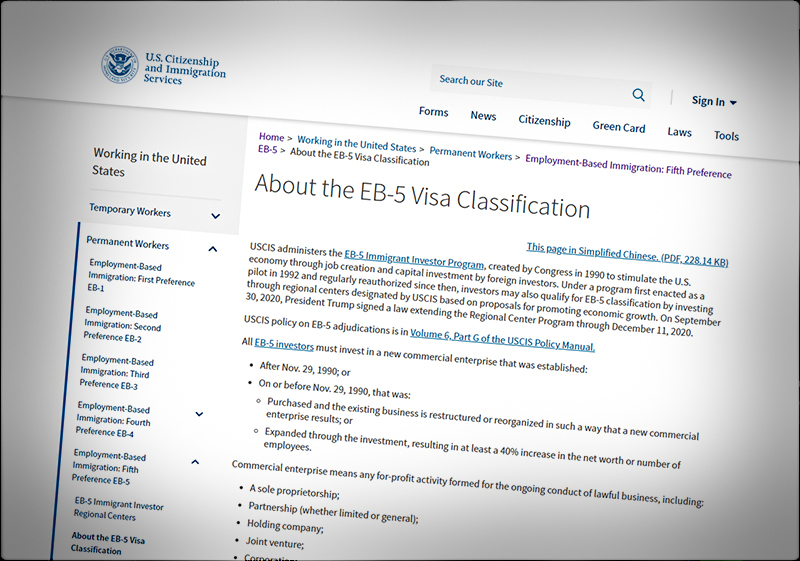
While the overwhelming corruption problem with the EB-5 immigrant investor program comes from Stateside middlemen stealing or misusing aliens’ funds (see, for instance, here, here, and here), there is another difficulty as well: some would-be alien EB-5 investors are denied green cards because they cannot prove to the government that they secured the investment money in a legitimate way.
These are two quite different matters and involve two totally different sets of players.
Since most investors in the program come from China, it is safe to say that most of those denied applications for this reason are from China too, though hard numbers on that remain hidden. Corruption is a major challenge in China.
The authorization for the main part of the EB-5 program, that dealing with the pooling of alien investments through regional centers, was not renewed in a Senate action last month, and that decision may or may not be permanent.
The part of the EB-5 program that died on June 30 allowed aliens to essentially buy a family-size batch of green cards if they put $900,000 into a DHS-approved, but not guaranteed, investment, usually in big city real estate. The minimum investment used to be $500,000.
Congress has let the main part of the EB-5 program lapse in the past, only to revive it later. There is also a rarely used, non-controversial element in the program which gives green cards to investors who want to come to the U.S. to actually run a business; this is permanent and is not subject to periodic renewals by the Congress.
How many of the would-be alien investors are denied because of questionable sources of the investments? This, given USCIS policies, cannot be known for certain, but we have encountered some interesting clues.
The first point to be made is that USCIS is more likely to reject applications from EB-5 applicants than it is from aliens generally. In Fiscal Year 2020, for example, USCIS approved 88.5 percent of all the petitions before them, while denying 11.5 percent. This can be seen in an agency-wide reporting system we have described earlier.
In the same time period EB-5 petitions were treated differently: 75.3 percent were approved and 24.7 percent of them were denied. This suggests that EB-5 applications are twice as troublesome to the decision-makers as migration applications generally. And the source-of-funds issue is certainly part of the equation.
Routinely, USCIS does not disclose why it rejects petitions, but there is another part of the system that is a little less hidden. Some of the denials are appealed to an in-house, semi-judicial entity called the Administrative Appeals Office, the work of which we described in a longish report recently.
There are, in fact, two different possible fates for the denied petitions; the really weak ones, once denied, are not appealed, while the more plausible ones, or the ones with legal representation, are appealed. We found that over a long time – maybe 16 years – that 984 EB-5 petitions had been appealed to AAO. These were appeals from decisions on form I-526, the alien’s application for EB-5 status. Some to many of the 844 denials in FY 2020 must have been appealed to AAO.
AAO decisions, unlike those of the USCIS staff, are published and despite a spate of redactions these documents are available to all and sundry.
In these decisions the AAO judges tell why they decided what they did. We looked at a sample of 41 of the more recent EB-5 decisions in our previously cited report on AAO, and found that in 31 of them the question of the legitimate origin of the invested money was mentioned, and that in 28 of the 31, AAO denied the appeal.
One might suspect that the denials that were not appealed had at least as many problems of this kind as those that were appealed.
So, not all the aliens approaching the EB-5 program come with clean hands.
